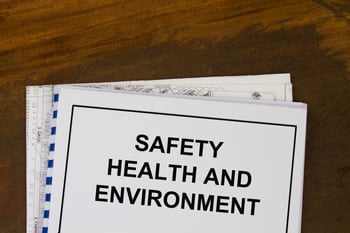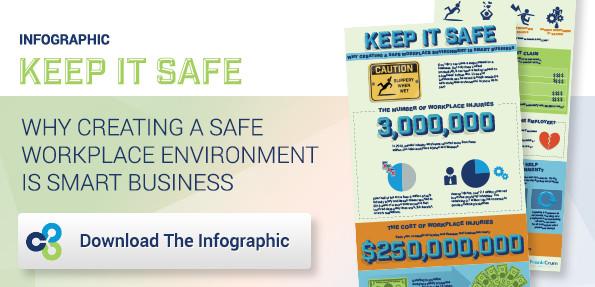 Deck the halls with boughs of holly… and business safety priorities for next year.
Deck the halls with boughs of holly… and business safety priorities for next year.
As 2015 draws to a close, setting safety priorities is a great way to show your commitment to improving your business, bettering the lives of your employees and starting a clean slate to implement safe best practices.
But just saying you want to have a safer workplace isn’t enough, and can turn into a detrimental cycle of saying and not doing. That will inevitably trickle down to your employees; we’ve seen it time and time again--monkey see, monkey do. Or don’t do, in this case.
In 2014, there were 4,251 worker fatalities in private industry according to the BLS’s Census of Fatal Occupational Injuries (CFOI) counts. Of this number, contractors accounted for 17% of all fatal work injuries in the United States.
Certain worker injuries and fatalities must be reported to OSHA within 8 hours of the occurrence. If not, your business can be held liable for not taking due diligence for the safety of your employees. How can you change the tide and ensure you implement and align your business’s safety priorities?
Safety Priorities for 2016
Here are 4 safety priorities to consider for 2016 that will help to improve your profits:
#1: Get involved!
Make a commitment to get involved in your business’s safety practices. You can do this by putting together a safety commitment statement, or any other kind of mission statement for 2016 that lists safety expectations for the next year.
Make sure it is in writing, and has a signature that demonstrates to your employees that you’re setting expectations for employees and for yourself. By doing so you are establishing the baseline for safety as an owner and upping the ante. Remember the monkey see, monkey do idiom? This is how it starts.
#2: Get Employees Involved
Your mission statement should also need to be signed by employees, too. By putting your expectations in writing and having your employees sign off that they’ve read and understood it, this reinforces the fact that they are going to abide by it. This also means you have a chance as a business owner to help your employee further understand their roles and responsibilities in your organization so there are no gray areas.
You can take this one step further and place accountabilities in place if employees don’t follow the safety guidelines in the statement. That way, if there are potential barriers or obstacles, your employees can take the initiative and work with management to remove them so they can accomplish these expectations.
#3: Identify Your Hazards
Once you’ve taken the first step toward better safety, it’s time to find out how to improve and identify your hazards. Get problems your organization had last year through claims trending or incidents/accidents trending reports. Find out if there are recurring problems, why it happened, and key problems from the accident. Ask yourself, “What are some of the traditional top risks in the workplace, and why are they risky?” From there, you can brainstorm some best practices.
We here at FrankCrum have some great resources through our Safety and Risk Management departments that can provide you with checklists, tools and audit forms you can use to help identify these hazards.
Also--don’t discount near misses. In other words, don’t just look at the large-scale accidents and examine small injuries and/or first-aid reported incidents as well, because they go right along with injuries in the workplace, too.
#4: Figure out Controls for Those Hazards
You can examine accident reports and brainstorm ways to be safe in the workplace all day long, but your ultimate number 1 place to look should be your employees. They are at the front lines every day and will most likely will have the best ideas and suggestions, and will know how to control the hazards.
Once you get a list, review your hazards and list them in priority and how they’re going to help your business. Also, tag them based on critical priority levels they would have. For example, correcting someone standing on one leg reaching on a ladder to get to a window is far more important than refilling your out-of-code fire extinguishers.
FrankCrum can help you work through your questions and provide great resources for your business. We have safety advisors that can help mitigate your company from risks and give advice for best practices.
Safety is a Continuous Process
Ensuring safety priorities isn’t something you just set and forget. After controlling your hazards and prioritizing them, you need to follow-up to make sure these controls are working and that they are in place like you thought they would be. You may have to make adjustments and get feedback from your employees to perfect your safety system.
Safety is not only possible, but completely achievable for this year and the next. We hope your holiday season is safe and filled with family, fun and friends! To help jumpstart your safety efforts, feel free to contact us.





